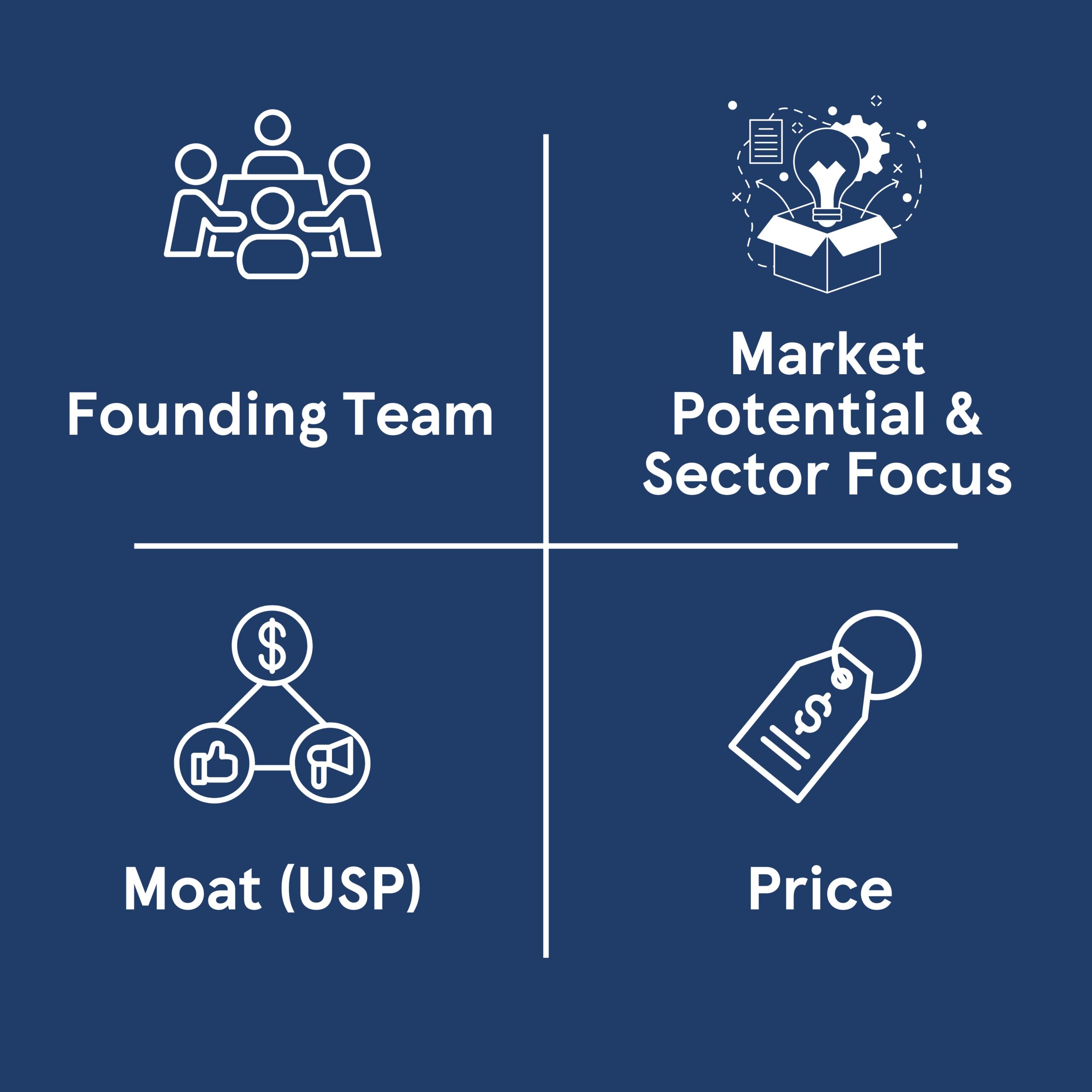Investors, happy to introduce the SNV Knowledge Series, wherein we share how as fund manager we go about our key business activities. In this Series we discuss the startup evaluation process in two parts. One might wonder, why are we sharing the secret sauce? As we keep telling founders, execution and the DNA is key 😊, just the idea rarely matter. Do share your thoughts on what else can we cover in this Series.
The first step to the startup evaluation e process is access to superior quality startups (in our parlance the term of startups is deals). This is easier said than done. In India alone there are more than one lakh registered startups (actual number would be higher). How does one get to the good eggs – as in any industry, this happens through the right network. This network consists of incubators, accelerators, educational institutions, venture funds, noteworthy investors, investment bankers and startup events. Such a network is usually built over the years. SNV with an experienced team in the startup space present in various parts of the world has developed some strong networks that provide a great deal flow. Added to this, inbound leads are aplenty.
But as in any supply demand situation, the good ones (high in demand) will come to the discussion table because they will find us a worthy partner during their journey. The color of the money matters and startups today recognize the value that SNV brings to the table apart from the money.
Now that we have these startups in our funnel, we start knocking off those that do not fit our thesis or are in a segment which is not our strength. We also start eliminating those that have unreasonable valuation (in other words not a good price to buy) or have involved capital table issues.
Before we go deeper into the process, let us understand the main evaluation criteria:
- Founding team – KRAs and shortfalls
- Market potential and sector focus
- Moat (USP) – this can be technology, sales related or even a business model
- Price – entry valuation, potential upside, market dynamics

Founding Team
The founding team is the backbone of the startup. And we at SNV are clearly backing the founders. Normally startups take a couple of pivots before they find the product market fit – they might change segment or the product completely, but the people steering are key to keep moving ahead. For example, one of our previous exits, Pixis.ai (formerly known as Absentia VR) started as a VR head set for the gaming industry. But today they are a codeless AI platform for marketing campaigns and have raised 200+ million dollars.
The startup journey is an arduous one and we look for the grit and determination in founders to be able to brave it. We also evaluate the founders based on compatibility – we have seen many startups fail because of founder differences. Furthermore, it is important for founders to have expertise in the area they are building – especially in certain segments such as health and finance. We tend to have 5-6 meetings with the founders (at least one of them in person) where we look at these aspects.
Additionally, we try to gauge certain other nuances as well, including but not limited to, the ability of the founder to create a big company at scale, ability to raise huge sums of capital, ability to hire & retain the right talent and capability in sales / GTM strategy. Obviously, we play a key role in helping them with all this.
USP
A startup with no moat does not make for a worthwhile investment. Now, one must remember that this uniqueness can come not only from a next generation product but also from a business model – say you are using subscriptions to recover your capital expenditure (as in rental bikes or subscription-based water purifiers). Sometimes part of the USP is the founding team – it is not easy for another company to find such a team to execute in this segment.
A moat can also be developed because of an early entry into a new segment or network effects. Partnerships in the supply chain can also result in some strongly defensible situations. Finally, having deep pockets can be a smart way to thwart out the competition (Poker anyone).
Valuation
The million-dollar question in this industry is are you getting the shares at the right price? As in case of diamonds, valuation of startups is both an art and a science (especially in early stages, in the late stage startups it is a flawed science – where valuations are cut by billions of dollars overnight 😊).
When you look at the price of an instrument, you need to ask what is the potential upside that you could get from here and at what time. What are the market indicators and what are comparable prices? Why would a later stage investor be interested in such a startup and at what price? Finally, a more involved feature of the venture industry is how do you structure a deal right to ensure a great upside. This specific point is certainly for another piece, but some sample thoughts – today I invest two crores at 20 crore valuation – will I want to go in for another 5-crore investment at 50 crore valuation. If I get an exit 2 years later at 200 crore valuation, I will get 20 crore + 20 crores = 40 crore INR, which is a sweet deal.
Will cover the remaining process in the next part. Hope this article was useful.

